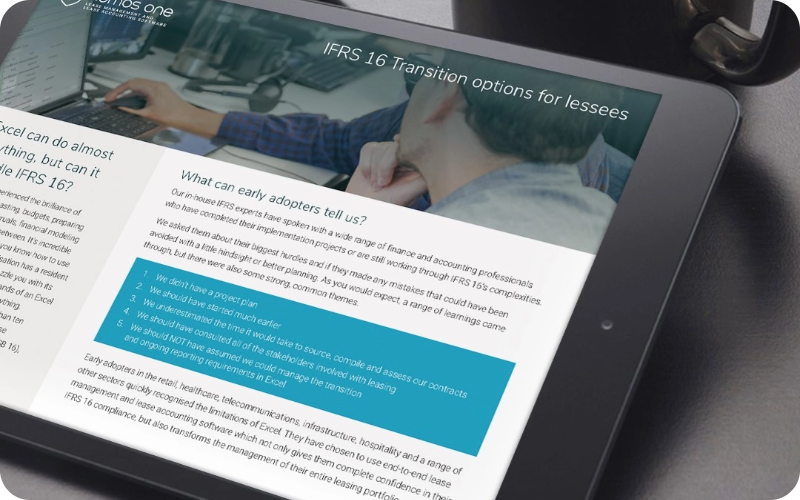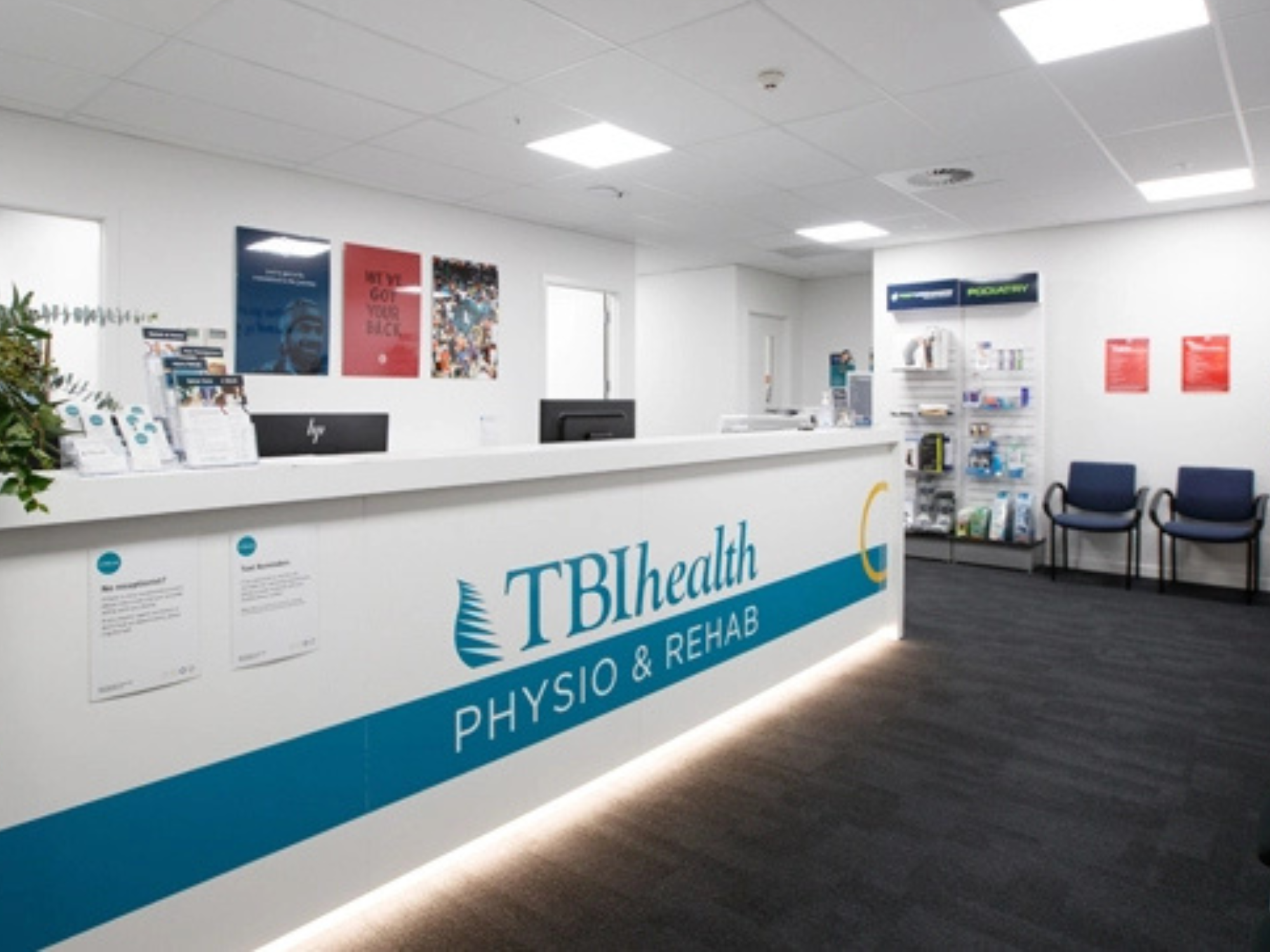Effective lease accounting and governance are essential for any business to accurately evaluate its performance, plan for future growth, and meet government compliance requirements. However, no matter how robust the lease accounting system you have in place, accounting errors can still occur. To that end, let's discuss the common year-end lease accounting errors that could be costing your business time and money - and more importantly, how you can avoid them.

Manual data entry errors
Manual data entry is prone to errors, and these can prove costly for your business. Research shows incorrect data can cost organisations up to $100 per record if left unchecked. Typing errors, incorrect formulas, and misplaced information are the most common errors for manual data entry - and can easily slip into your accounting records without being seen.
To improve financial accuracy, consider using lease accounting software to automate manual tasks and data calculations. As well as improving accuracy, the right software can reduce the time and effort required to complete lease accounting tasks, freeing up staff and resources for other priorities.
Lost documentation
Missing documents are a common cause of lease accounting errors. Invoices, receipts, bank statements, and other important portfolio documentation are crucial for an accurate accounting record. In our experience, lease-related documents often go missing when:
- Organisations operate with inadequate document management processes
- Human error, typically when staff misplace or accidentally delete a file
- Technical failures, such as data breaches or system crashes
- Lack of standardised process for sharing and organising lease-related documents
It is essential to have a system in place to track these documents and ensure they are stored in a safe, secure place. Lease accounting software is a great way for businesses to centralise information, removing the need for paper trails. A reputable provider will upload all your documentation and check for any inconsistencies, errors or missing records. As your lease portfolio grows, new agreements can be uploaded and managed directly in the platform.
Regular reviews are also an effective way to spot any missing documents and correct lease accounting errors before they become a concern. By conducting periodic reviews, you can ensure that lease transactions are recorded accurately and the necessary supporting documentation is in place. Reviews can also provide an opportunity to update existing lease information, reducing the risk of future errors.

Poor communication
Poor communication between departments and team members can lead to lease accounting errors. When working with multiple stakeholders, it is important to establish clear lines of communication to ensure everyone is on the same page. This might include setting up regular meetings, having a central repository for important information, or using a lease management software tool to track progress and communicate updates.
A lease management tool enables all stakeholders to access the latest information on lease agreements, events and other critical aspects of your portfolio, reducing the risk of miscommunication or errors. Additionally, many come with collaboration features such as task management, pop-up notifications and email integration - allowing team members to communicate effectively and efficiently on lease-related issues.
Human error
As much as we would like them not to be, human error is an inevitable part of any accounting system and one of the most common causes of accounting errors. According to research, human error costs Australian businesses an average $650 per employee per year.
To minimise the risk of accounting errors, it’s important to have a robust system in place to check and verify information. You can also:
- Plan capacity to ensure your accounting team is not overloaded with tasks
- Implement internal controls to ensure errors are detected and prevented
- Spend time training your team on company lease accounting processes
- Keep detailed records, especially documentation of any changes made to lease agreements
- Invest in lease accounting software with built-in error checking and validation features

Lack of organisation
Too often, a lack of organisation can be a major source of lease accounting errors. This includes not having a clear system for tracking lease contracts, payments and renewals, resulting in the incorrect calculation of lease liabilities, incorrect recognition of revenue or expenses, and incorrect presentation of leases in financial statements.
To avoid these errors, it is important to regularly review your lease portfolio to ensure information is accurate and up-to-date. Comprehensive lease management software can also help to automate manual processes, improve data visibility, and ensure compliance with IFRS 16 accounting standards.
Failure to keep a regular accounting schedule
Neglecting lease accounting responsibilities and failing to keep a regular schedule is another common cause of accounting errors. This can lead to missed deadlines, late payments, and incorrect financial statements. To avoid these mistakes, it is essential to have a clear lease accounting schedule in place and keep to it.
Lease accounting software can help you keep to a regular schedule by providing built-in reminders and alerts. Reputable solutions can automatically send notifications when critical lease-related deadlines are approaching. Additionally, they can provide real-time data and reports to help you stay on top of your lease obligations and make informed decisions about the future of your portfolio.

Failure to back up data
In today’s increasingly digital world, backing up your financial data is critical. With cyberattacks and data loss a rising threat to organisations across Australia, you could lose valuable financial information and be unable to access important records. To avoid this, it is crucial to regularly back up your data locally or to a cloud-based solution. This will ensure you always have access to your portfolio information, even in a disaster.
Cloud-based lease accounting software typically includes robust data backup and recovery options, ensuring critical portfolio data can be quickly restored in case of a disaster or system failure. Top-tier solutions can automatically perform regular backups and store data behind robust security measures, providing peace of mind that critical data and documents are secure. These solutions are also typically managed by experienced IT professionals with the systems, qualifications and technology to protect your portfolio data.
Failure to reconcile accounts
Reconciliation of accounts is an important step during the year-end accounting process but is often neglected. Failure to reconcile your accounts can result in incorrect financial statements, a lack of visibility into your lease portfolio, and in the worst cases, increase the risk of errors or fraud. To avoid this, it is essential to reconcile your accounts regularly and check for any discrepancies.
However, we appreciate that lease accounting under IFRS 16 is more challenging, especially given:
- The new standard requires companies to keep detailed records of all lease-related transactions, making reconciliation more difficult and time-consuming, especially for businesses with complex portfolios
- The accounting standard requires calculation of the present value of future lease payments
- Reconciliation under IFRS 16 requires collaboration across the business
This is where lease accounting software can offer value. Said software can ensure the accuracy of year-end financial reporting by keeping detailed records of these transactions, automating complex calculations, and enhancing collaboration across the business. A good solution will also generate draft balance sheets, profit and loss statements, cash flow statements, disclosure reports and journal data that can easily be exported and uploaded to your general ledger.

Leaving work to the deadline
Lease accounting is complex, so it’s important not to leave work to the deadline. By starting early, you will be better prepared to make any required updates, correct data entry issues and validate any changes you make. Starting early also helps to spread the workload over time and reduces the stress and pressure associated with completing a large volume of work in such a short period.
Some factors to consider:
- Start preparing for agreement changes as soon as you know them. This will give you sufficient time to assess any impacts on your portfolio.
- If you manage a large or complex lease portfolio, it may take longer to ensure compliance with IFRS 16 accounting standards.
- Lease accounting can involve various stakeholders, including investors, lenders, property managers and more. Engaging with these stakeholders early is vital to ensure everyone is prepared for year-end.
Not seeking help when needed
Whether you are struggling with complex portfolio information, dealing with an unexpected portfolio event, or simply needing advice, it is important to seek help from a professional. Professionals experienced in lease accounting can help you identify and correct accounting errors, provide valuable insight into your portfolio, and offer guidance on improving your management processes.
Reviewing regulatory requirements and industry-specific guidelines can also help address any challenges you face. This will help ensure you comply with IFRS 16 and other lease accounting standards and that any leasing decisions you make are backed by data.

Strive towards accuracy and efficiency
The importance of effective lease accounting and governance cannot be overstated. Without accurate financial records, it becomes difficult to evaluate the performance of your lease portfolio, plan for growth, and meet compliance requirements.
Despite a solid system, year-end lease accounting errors can still occur. By keeping these mistakes in mind and taking proactive steps to avoid them, business owners can maintain the integrity of their financial records and avoid any potential issues.
Experiencing a messy year-end, preparing for one or just coming out the other side? We understand that lease accounting under the IFRS 16 standards can be complex, especially regarding year-end reporting. However, you can enjoy a smooth and successful financial year-end with the right processes and procedures.
Does this sound interesting to you? Get our latest checklist, which includes actionable steps to ensure your year-end runs efficiently from here on out.























